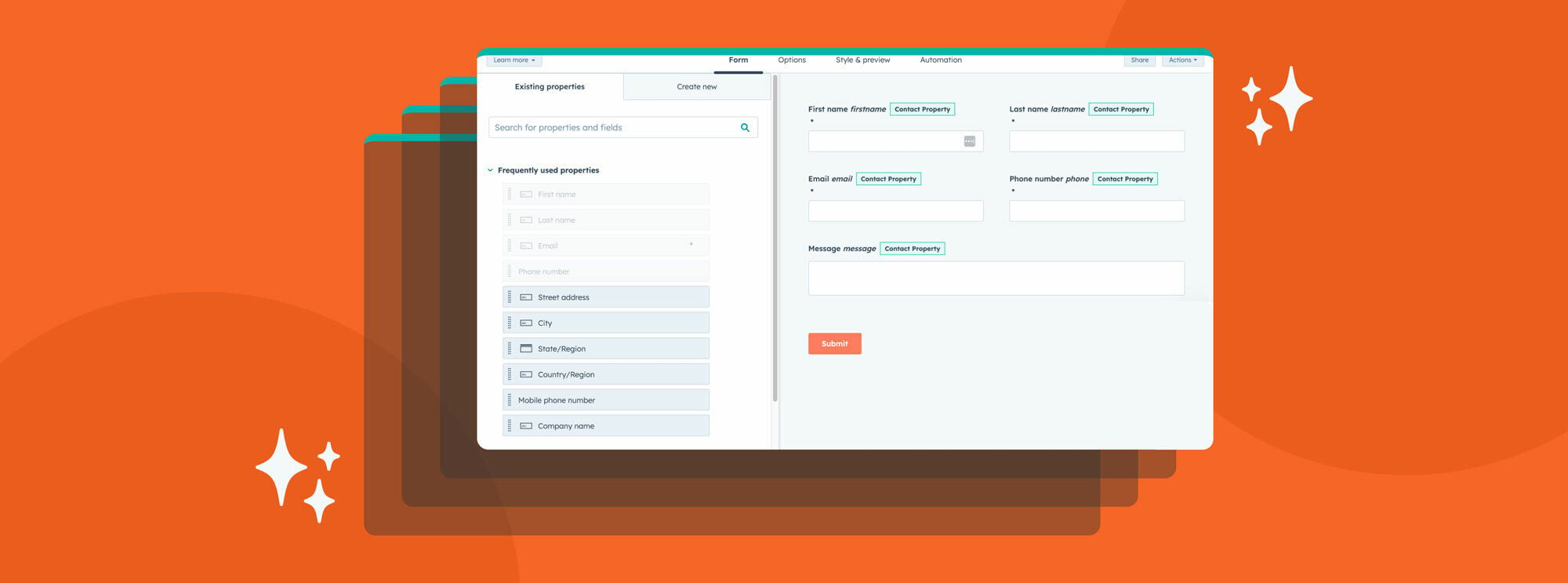For marketing teams, demonstrating a clear return on investment (ROI) is key to garnering buy-in from stakeholders and securing a much-needed budget from decision-makers. However, ROI has been trickier to nail down as consumers have more and more touchpoints with brands. Social media, email, digital advertising, blogs, downloadable resources—all of these touchpoints have made it much harder to identify exactly which marketing activities are driving sales down the road.
That’s where multi-touch revenue attribution can help. As defined by HubSpot Academy, multi-touch revenue attribution is a report type that gives sales and marketing teams insight into the impact of marketing collateral on sales. These reports paint a clear picture of how customers are interacting with marketing assets and which ones are causing leads to convert into customers and generating ROI.
These reports have many more benefits than just showcasing ROI. Businesses may also uncover more profound insights into content, channels, and nurturing tactics that work. These insights enable them to optimize future marketing campaigns, make informed budget decisions, and align marketing and sales teams for long-term success. Keep reading to learn everything you need to know about multi-touch revenue attribution reports in HubSpot.
Table of contents
- Introduction to HubSpot attribution reporting
- What’s so special about multi-touch attribution reporting?
- Benefits of multi-touch revenue attribution reporting
- Which HubSpot attribution model should you use?
- Which pieces of content at the top of my funnel are influencing the most revenue?
- How are sales reps impacting revenue?
- Which pieces of content are generating leads who convert?
- Which marketing and sales assets are most valuable?
- What marketing tools are most valuable to converting leads to customers?
- What is getting site visitors to fill out forms?
- Which interactions with my brand drive the quickest sales conversions?
Introduction to HubSpot attribution reporting
Before we dive into the specifics, it’s important to gain a general understanding of attribution reporting. As you already know, marketers are responsible—either directly or indirectly—for three overarching goals. These are lead generation, lead nurturing, and revenue creation. While this blog post focuses primarily on multi-touch revenue attribution reports, it’s worth noting that it’s possible to create basic attribution reports as well (we’ll get into those details in a bit).
There are three main types of attribution categories available through HubSpot:
- Contact create attribution: Measures which sources, assets, or interactions have the greatest impact on generating leads.
- Deal create attribution: Measures which sources, assets, or interactions have the greatest impact on generating deals.
- Revenue attribution: Measures which sources, assets, or interactions have the greatest impact on driving revenue.
These attribution categories have models that can help you answer specific questions, compare marketing asset performance, and make informed decisions.
“At its core, attribution reporting tells you which channels to invest in by looking holistically at which channels help you meet your goals. That’s the beauty of attribution reporting: it lets you compare apples to apples or apples to oranges.” – Davis Mastin, HubSpot Product Manager, Reporting & Analytics
What’s so special about multi-touch attribution reporting?
HubSpot’s basic marketing attribution reports “pull all the relevant interactions from your buyers’ journey together using pre-built models that can definitively answer which channels and content are helping you meet your marketing goals.” Multi-touch attribution takes that a step further and actually assigns value to the various interactions a contact had before they converted. It’s important to note that there are many different multi-touch attribution models, and each assigns credit, or value, to interactions based on different rules. (We will break down each model later on in this blog post.)
“Multi-touch attribution reporting allows teams to set up parameters and assign credit to various teams for a customer who is going through the buyer’s journey.” – Nakul Kadaba, HubSpot
It’s possible to create multi-touch attribution reports for contacts and revenue in HubSpot. In instances where multi-touch revenue attribution reports are used, decision-makers can pinpoint the exact interactions with marketing or sales assets that had the greatest impact on revenue.
Benefits of multi-touch revenue attribution reporting
In the modern age, it’s absolutely critical to make informed business decisions. Multi-touch revenue attribution reporting empowers businesses with the data they need to make strategic decisions that will help them scale quickly. At a high level, these reports can give you insight into three main areas: content, channels, and nurturing. Find out what types of content customers engage with, how they find that content, and where they are in their buyer’s journey when they engage with that content.
From there, you can definitively assess what’s working and what isn’t, and identify opportunities for future growth. Use your multi-touch revenue attribution reports to determine where to allocate future budget and resources that will maximize ROI.
Perhaps the most important benefit is the ability to show leadership the exact campaigns, initiatives, and content that generate revenue for your business. This is essential for securing a larger budget, additional team members, and more support down the road.
Which HubSpot attribution model should you use?
Like many of the topics we discuss here on the Raka blog, the answer to the question, “Which attribution model should I use?” isn’t cut and dry. The attribution model (or models) you choose depends on what questions you have that need to be answered. You may need to use multiple models to answer different questions from various teams and stakeholders. For the sake of providing you with a solid starting point to determine your ideal attribution models, we’ve sorted them by question category below.
Which pieces of content at the top of my funnel are influencing the most revenue?
First touch: Assigns all deal revenue credit to the first interaction. This is excellent for brand awareness campaigns, in addition to understanding where leads originate from.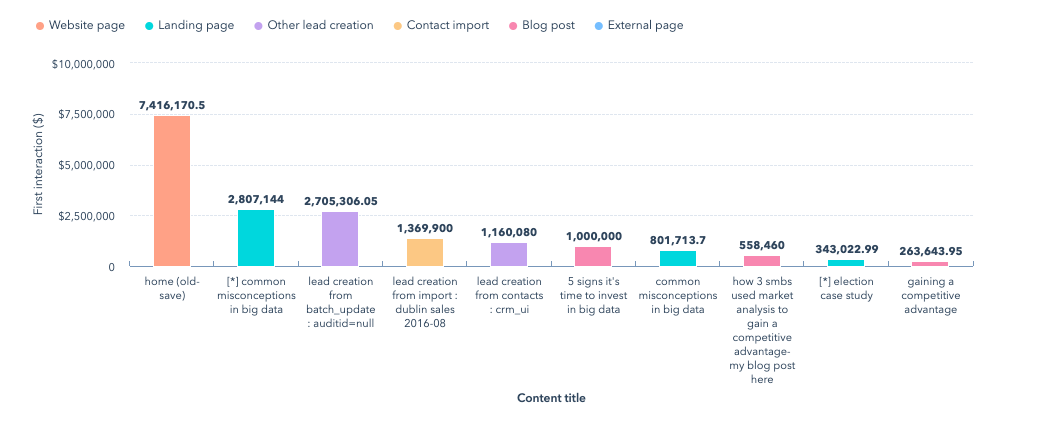
How are sales reps impacting revenue?
Last touch: Assigns all deal revenue credit to the last interaction before a conversion. This model is beneficial for understanding the interactions that are most effective at converting users into leads.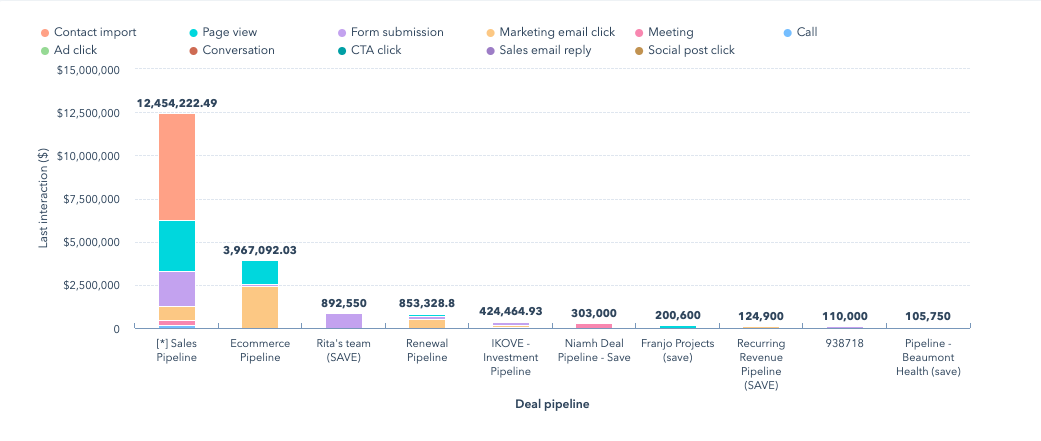
Which pieces of content are generating leads who convert?
U-shaped: Assigns 40% of deal revenue credit to the first interaction and 40% to the interaction that creates the lead. The remaining 20% is split evenly between those interactions. Because it gives credit to all of the interactions that led to a user converting, it identifies specific pieces of content that contribute to revenue.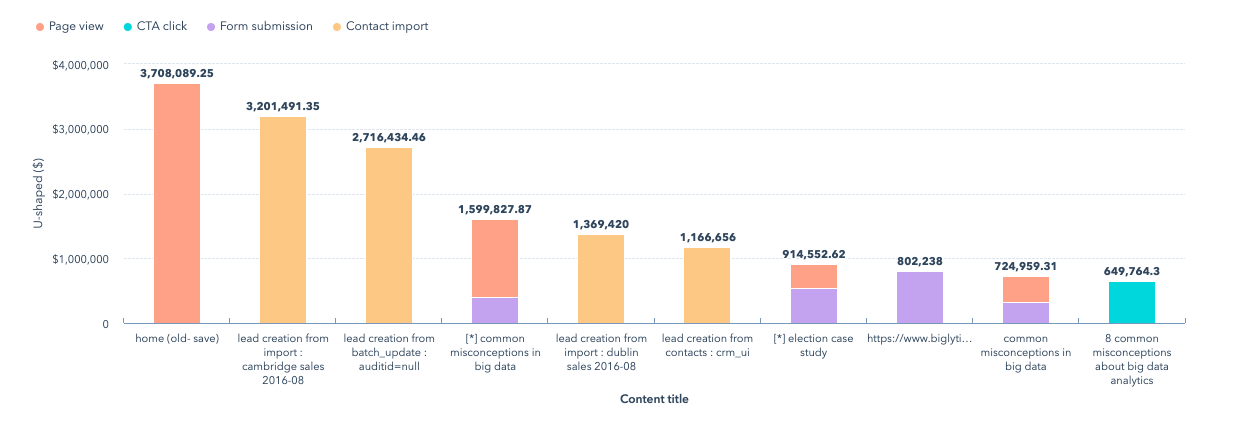
Which marketing and sales assets are most valuable?
Linear: Assigns deal revenue credit equally to all interactions before the deal was closed. This is especially useful for “apples to apples” type comparisons.
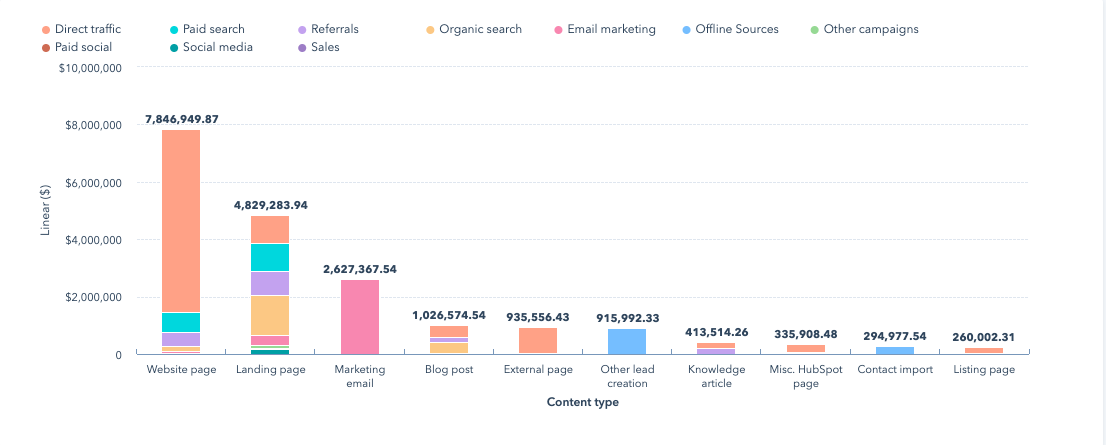
What marketing tools are most valuable to converting leads to customers?
W-shaped: Assigns 30% of deal revenue credit to the first interaction, 30% to the interaction that creates the contact, and 30% to the interaction that closed the deal. The remaining 10% is split evenly between the first and deal interactions. This is great for companies with multiple lead generation channels or multiple nurturing channels.

What is getting site visitors to fill out forms?
Full-path: Assigns 22.5% of deal revenue credit to the first interaction, 22.5% to the interaction that creates the contact, 22.5% to the interaction that creates the deal, and 22.5% to the interaction that closes the deal. The remaining 10% is split evenly between those four main interactions. This is great for smarketing (sales and marketing alignment) and large marketing and sales organizations with multiple branches in different areas.
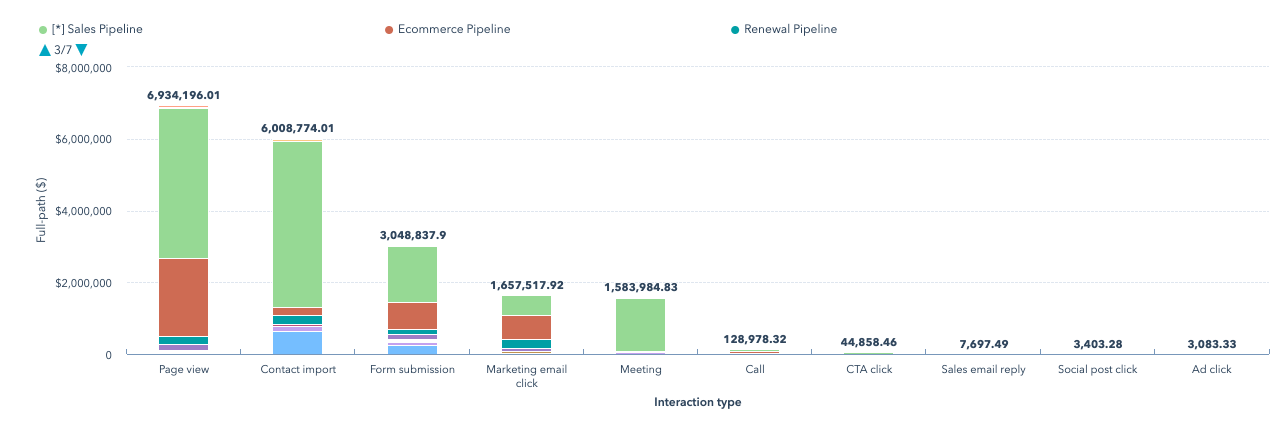
Which interactions with my brand drive the quickest sales conversions?
Time decay: Assigns the most deal revenue credit to most recent interactions. This is great for measuring sales velocity and understanding which interactions get users to convert faster.
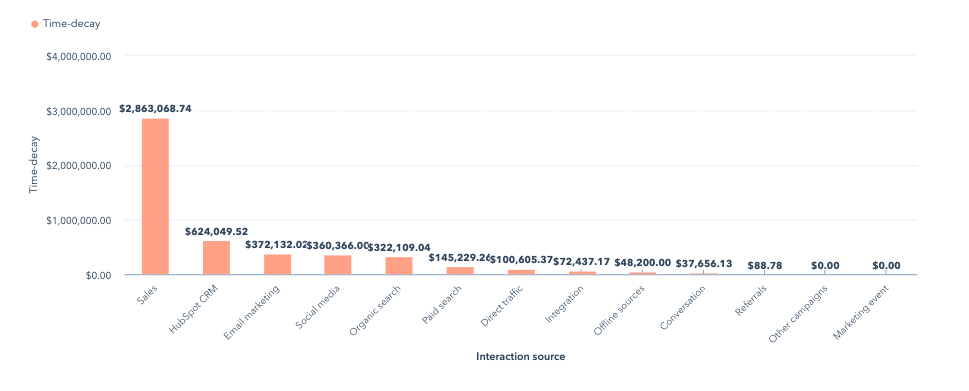
At Raka, we love HubSpot’s multi-touch attribution reporting tool for its ease of use—all of the models are out-of-the-box—and for the rich insights it provides. If you’re new to attribution, we highly recommend taking HubSpot’s course, Measuring Marketing Success With Revenue Attribution Reports, as a starting point. Our team of HubSpot experts is also here to help you discover how to maximize your return on investment using the platform.






